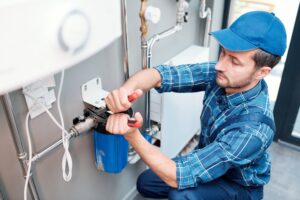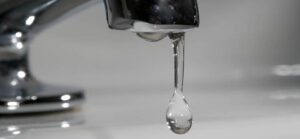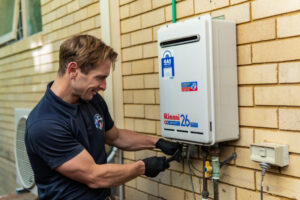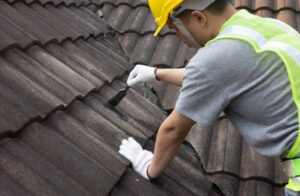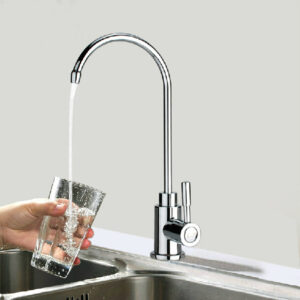Common Causes of Leaking Taps: Understanding the Source of the Drip
Leaking taps can be a frustrating and wasteful problem for homeowners and businesses alike. The incessant drip not only leads to water wastage but can also cause damage to fixtures and surfaces if left unchecked. Understanding the root causes of leaking taps is crucial for effectively addressing the issue and preventing further damage. In this article, we’ll delve into the various common causes of leaking taps and explore ways to remedy them.
1. Worn Out Washers
One of the most common culprits behind leaking taps is worn-out washers. Washers play a vital role in creating a watertight seal within the tap mechanism. Over time, constant usage can cause these washers to deteriorate, resulting in leaks. Signs of worn-out washers include dripping from the spout even when the tap is fully closed, or a noticeable increase in water bills.
2. Loose O-Rings
O-rings are another essential component in tap mechanisms, providing a seal between moving parts. When O-rings become loose or worn, they fail to maintain a tight seal, leading to leaks around the base of the tap or handles. Checking and tightening or replacing O-rings as needed can resolve this issue.
3. Corroded Valve Seats
Valve seats are the connection points between the tap and the spout. When these metal surfaces corrode due to exposure to water or minerals, they can no longer form a tight seal, resulting in leaks. Regular maintenance and cleaning can help prevent corrosion, while replacing corroded valve seats may be necessary to stop leaks.
4. High Water Pressure
Excessively high water pressure can put undue stress on tap components, leading to leaks over time. Symptoms of high water pressure causing leaks include water spurting from the tap or dripping despite being fully turned off. Installing a pressure regulator or adjusting the pressure at the mains can help alleviate this issue.
5. Improper Installation
Poor installation practices can also contribute to tap leaks. Incorrectly sized or fitted components, improper sealing, or overtightening during installation can all lead to leaks. Hiring a professional plumber to install taps correctly can prevent such issues from arising.
6. Cracked Pipes
Cracked pipes connected to taps can be a hidden cause of leaks. Temperature fluctuations, physical damage, or corrosion can lead to pipe cracks, allowing water to escape and cause leaks. Thorough inspection and timely repair or replacement of cracked pipes are essential to prevent further damage.
7. Mineral Buildup
Mineral buildup, often referred to as limescale or calcium deposits, can accumulate within tap mechanisms over time. This buildup interferes with the proper functioning of taps, leading to leaks and reduced water flow. Regular descaling using vinegar or commercial descaling products can help prevent this issue.
8. Old Tap Parts
As taps age, their components can deteriorate, leading to leaks. Oftentimes, rubber seals, gaskets, or other internal parts degrade over time, compromising the tap’s integrity. Replacing old or worn-out tap parts with new ones can effectively eliminate leaks and restore functionality.
9. Extreme Temperatures
Extreme temperatures, whether hot or cold, can impact tap performance and lead to leaks. Frozen pipes can burst, while excessive heat can cause rubber seals to degrade more rapidly. Proper insulation and protection measures can help mitigate the effects of extreme temperatures on taps.
10. Water Quality Issues
Poor water quality, characterised by high mineral content or sedimentation, can exacerbate tap leaks. Sediment buildup within tap mechanisms can lead to blockages and leaks over time. Installing water filtration systems or regularly flushing taps can help maintain water quality and prevent leaks.
11. Excessive Wear and Tear
Daily usage and wear can take a toll on tap components, leading to leaks over time. Constant turning of handles, friction, and exposure to water contribute to wear and tear. Regular maintenance, such as lubricating moving parts and replacing worn components, can prolong the lifespan of taps and prevent leaks.
12. Incorrect Water Pressure
Incorrect water pressure, whether too high or too low, can disrupt the proper functioning of taps and lead to leaks. Inadequate pressure may result in dripping taps, while excessive pressure can cause damage to internal components. Adjusting water pressure settings or installing pressure-reducing valves can help maintain optimal conditions.
13. Environmental Factors
Environmental factors such as humidity, exposure to sunlight, or proximity to corrosive substances can impact tap integrity and lead to leaks. Rust, corrosion, or degradation of materials due to environmental conditions can compromise tap functionality. Taking measures to protect taps from environmental damage can help prevent leaks.
14. Faulty Seals and Gaskets
Seals and gaskets within tap mechanisms are crucial for maintaining a watertight seal. When these seals degrade or become damaged, they can no longer prevent water from escaping, resulting in leaks. Regular inspection and replacement of seals and gaskets can prevent this issue.
15. Conclusion
In conclusion, understanding the common causes of leaking taps is essential for effectively addressing and preventing this nuisance. Whether it’s worn-out washers, loose O-rings, or corroded valve seats, each issue requires prompt attention to avoid water wastage and potential damage to property. By identifying the root cause of leaks and implementing appropriate solutions, homeowners and businesses can ensure the longevity and functionality of their taps. Remember, timely intervention and proper maintenance are key to avoiding costly repairs and ensuring the efficient operation of your plumbing system. For expert assistance with leaking taps repair, don’t hesitate to contact a licensed plumber or professional plumbing service provider.

